Si vos vidéos sous-marines sont souvent tremblantes ou lentes, un sea scooter peut faire une grande différence. Il vous aide à glisser en douceur, rendant beaucoup plus facile la capture de plans stables et professionnels. Ce guide vous montrera comment en utiliser un pour améliorer votre réalisation, afin que vous puissiez capturer de meilleures images lors de votre prochaine plongée.
Comment choisir votre sea scooter et votre matériel photo
Avantages clés de l’utilisation d’un sea scooter pour le tournage
Un sea scooter est plus qu’un simple moyen de déplacement ; c’est un outil puissant de réalisation qui résout de nombreux défis courants de la vidéo sous-marine.
Images fluides et stables
La propulsion stable d’un sea scooter crée une plateforme de tournage incroyablement stable, agissant comme un dolly mobile. Cela élimine le mouvement saccadé de haut en bas qui provient souvent du coup de pied avec des palmes, vous permettant d’obtenir le type de plans de suivi fluides que l’on voit dans les films professionnels.
Plus grande portée de tir
Avec un sea scooter, vous pouvez couvrir sans effort de grandes zones comme une épave entière ou un long récif corallien en une seule plongée. Cela augmente considérablement vos chances de trouver des sujets uniques et de capturer une gamme diversifiée d'images pour raconter une histoire plus complète.
Mouvement créatif de la caméra
Les sea scooters permettent des mouvements de caméra dynamiques presque impossibles à réaliser pour un nageur. Vous pouvez faire le tour en douceur d'un sujet immobile pour une prise "orbitale" à 360 degrés, ou effectuer une ascension contrôlée pour créer une révélation dramatique d'un paysage sous-marin.
Économie d'énergie et d'air
En laissant le sea scooter faire le travail physique, vous économisez beaucoup d'énergie et d'air. Cela permet non seulement des plongées plus longues, mais libère aussi votre capacité mentale pour vous concentrer entièrement sur les aspects créatifs de votre prise de vue — comme la composition, la mise au point et l'exposition.
Comment choisir le bon sea scooter pour filmer
Un sea scooter pour filmer doit être un outil fiable qui vous donne un contrôle créatif. Voici ce qu'il faut rechercher.
Recherchez une vitesse variable et une batterie longue durée
Le contrôle de vitesse variable est essentiel. Vous aurez besoin d'une vitesse lente pour des prises délibérées et d'une vitesse plus rapide pour suivre la vie marine ou gérer les courants. Il est crucial de vérifier l'autonomie continue du scooter à chaque vitesse pour s'assurer que la batterie dure toute votre plongée.
Choisissez un modèle facile à manipuler et à transporter
Cherchez un scooter avec une flottabilité neutre ou légèrement positive afin qu'il soit facile à manipuler et ne coule pas si vous le lâchez. Un modèle bien équilibré est crucial pour obtenir des prises précises. Si vous voyagez, un scooter plus léger avec des batteries amovibles conformes aux normes aériennes est beaucoup plus pratique.
Assurez-vous qu'il dispose de bonnes options de montage pour caméra
Un scooter pour filmer doit avoir au moins un support standard pour une caméra d'action. Les modèles supérieurs offrent plus de flexibilité, comme des points d'attache supplémentaires ou des surfaces planes pour monter des plateaux personnalisés pouvant accueillir des caméras et des lumières plus grandes.
Comment construire votre équipement de caméra sous-marine
Votre équipement photo doit être configuré pour fonctionner parfaitement avec vous et votre sea scooter.
Commencez par choisir la bonne caméra
Votre choix de caméra dépend de vos objectifs et de votre budget.
· Caméras d'action (GoPro) : Le point de départ le plus simple et le plus durable.
· Appareils compacts (Olympus TG) : Une bonne amélioration en qualité d’image et en contrôle.
· Mirrorless/DSLR dans un boîtier étanche : Le choix professionnel pour la meilleure qualité d’image, mais ce montage est volumineux, complexe et coûteux.
Obtenez une flottabilité neutre et un équilibre
L’objectif est de rendre l’ensemble de votre système (caméra, plateau, lumières) neutre en flottabilité pour qu’il semble sans poids. Vous y parvenez en fixant des bras de flottabilité et des flotteurs en mousse à votre plateau caméra pour compenser le poids. Un système équilibré est stable et facile à guider, ce qui est essentiel pour des images fluides.
Ajoutez des lumières vidéo essentielles
Les lumières vidéo sont indispensables pour restaurer les couleurs perdues sous l’eau. Comme l’eau absorbe les rouges et les jaunes, vous avez besoin de lumières pour éviter des images bleues ou vertes. Utilisez deux lumières vidéo à large faisceau montées sur des bras de chaque côté de votre caméra pour un éclairage uniforme et pour éliminer les ombres dures.
Complétez le système avec les accessoires clés
· Plateau caméra : La base qui maintient votre caméra et fournit des points de fixation pour les poignées et les bras.
· Bras articulés : Bras flexibles utilisés pour positionner vos lumières ou un moniteur externe.
· Moniteur sous-marin : Un écran séparé, plus grand, qui facilite grandement la confirmation de la mise au point et le cadrage précis de vos plans.
Votre sea scooter et votre système de caméra sont vos outils principaux pour raconter des histoires sous-marines. Une fois que vous avez sélectionné et assemblé le bon système, vous serez prêt à vous concentrer sur la partie la plus importante : les techniques créatives pour capturer des images époustouflantes.

Techniques de tournage avec votre Sea Scooter
Maintenant que votre équipement est prêt, il est temps de filmer. Cette section couvre les techniques les plus importantes pour le mouvement de la caméra, le cadrage et l’éclairage afin de vous aider à obtenir des plans d’aspect professionnel.
Plans essentiels pour caméra avec Sea Scooter
Maîtriser quelques mouvements de caméra de base améliorera considérablement vos vidéos. Voici les plans les plus efficaces que vous pouvez réaliser avec un sea scooter.
1. Prise de vue Dolly
C’est un mouvement latéral fluide parallèle à un sujet, ou un mouvement droit vers ou loin de celui-ci.
Comment faire: Utilisez la vitesse la plus lente de votre scooter pour vous déplacer à côté de votre sujet à distance constante. Vous pouvez aussi avancer lentement vers un sujet (un « push-in ») pour attirer l’attention du spectateur.
2. Prise orbitale
Cela consiste à faire le tour d’un sujet immobile pour le montrer sous tous les angles.
Comment faire : Faites le tour de votre sujet en gardant la même distance. Visez le scooter légèrement à l’écart du sujet et utilisez votre corps pour diriger en un arc fluide. Cette prise est parfaite pour mettre en valeur un point d’intérêt, comme une tête de corail ou une ancre sur une épave.
3. Suivre et traverser
Ces prises de vue créent un sentiment immersif de voyage en suivant un animal ou en traversant une structure.
Comment faire : Pour suivre un animal, adaptez votre vitesse et essayez d’anticiper ses mouvements sans le stresser. Pour un fly-through, comme passer par une ouverture d’épave, planifiez votre trajectoire à l’avance et déplacez-vous en douceur.
4. Monter et descendre
Utiliser un mouvement vertical peut rendre une scène massive et dramatique.
Comment faire : Utilisez le scooter pour maintenir une vitesse verticale contrôlée et stable. Une ascension lente d’une épave haute ou une descente dans un blue hole peut être très puissant. Assurez-vous toujours d’équilibrer vos oreilles.
5. Prise de vue Point de vue (POV)
Cela donne une perspective à la première personne, faisant sentir au spectateur qu’il est dans le voyage.
Comment faire : Montez une caméra d’action directement sur le support intégré de votre scooter. C’est idéal pour créer des séquences rapides et dynamiques.
6. Combinaison des mouvements
Une fois que vous êtes à l’aise avec les prises de vue de base, vous pouvez les combiner pour des résultats plus complexes et intéressants.
Comment faire : Essayez de faire le tour d’un sujet tout en montant lentement pour créer un effet de spirale. Ou, passez devant un objet au premier plan puis inclinez votre caméra vers le haut pour révéler une scène plus large derrière.
Comment cadrer vos prises de vue
Un sea scooter vous donne la liberté de trouver rapidement la meilleure position et le meilleur cadrage pour la caméra.
1. Créez de la profondeur avec des couches
Pour éviter que votre vidéo ait un aspect plat, cadre vos prises avec des éléments au premier plan, au plan moyen et en arrière-plan.
Comment faire : Utilisez votre scooter pour vous positionner facilement là où vous pouvez cadrer votre prise de vue avec des couches. Placez un objet au premier plan (comme un corail), votre sujet principal au milieu, et l'eau ouverte en arrière-plan pour créer une sensation de profondeur.
2. Utilisez des lignes directrices
Utilisez les lignes naturelles de l'environnement pour guider le regard du spectateur.
Comment faire : Trouvez une ligne, comme le bord d'un récif ou une rambarde sur une épave, et utilisez votre scooter pour la suivre en douceur. Cela crée un chemin de vision naturel et rend votre prise de vue plus captivante.
3. Appliquez la règle des tiers
Placer votre sujet hors centre crée généralement une prise de vue plus équilibrée et visuellement attrayante.
Comment faire : Imaginez une grille 3x3 sur votre écran. Utilisez votre scooter pour ajuster facilement votre position afin que votre sujet principal repose sur l'une des lignes ou intersections de la grille.
Comment obtenir une bonne lumière et des couleurs
Un bon éclairage est la clé pour capturer les couleurs vibrantes du monde sous-marin.
1. Combinez lumière naturelle et artificielle
Équilibrez la lumière du soleil venant d'en haut avec vos lumières vidéo pour des résultats au rendu le plus naturel possible.
Comment faire : Gardez le soleil derrière vous pour éclairer la scène globale. Utilisez vos lumières vidéo pour éclairer votre sujet principal au premier plan. Cela apporte de la couleur à votre sujet sans rendre l'arrière-plan sombre et artificiel.
2. Positionnez les lumières pour éviter le Backscatter
Backscatter est l'effet de particules neigeuses causé par vos lumières.
Comment faire : Montez vos lumières sur de longs bras, haut et large, loin de l'objectif de votre caméra. Cela éclaire votre sujet de côté et empêche les particules directement devant votre caméra d'être illuminées.
3. Réglez une balance des blancs manuelle
Vous devez indiquer à votre caméra à quoi ressemble le "blanc" sous l'eau pour obtenir des couleurs correctes.
Comment faire : À votre profondeur de tournage, pointez votre caméra vers une ardoise blanche et utilisez la fonction de balance des blancs personnalisée de votre caméra. Si vous changez de profondeur, vous devrez refaire cette opération.
Comment filmer différents scénarios sous-marins
Appliquer vos compétences à des situations réelles est l'étape suivante. Ce chapitre explore comment filmer des scénarios sous-marins spécifiques, des rencontres avec la faune aux plans artistiques.
Filmez la faune marine
Lorsque vous filmez des animaux, votre objectif principal est de capturer un comportement naturel sans les déranger. Un scooter sous-marin peut vous aider à le faire efficacement s'il est utilisé avec respect.
1. Approchez la faune en toute sécurité et avec patience
Pour capturer un comportement authentique, vous devez être un observateur passif, pas un poursuivant. Ne poursuivez jamais un animal. Approchez-le lentement par le côté en utilisant la vitesse la plus basse de votre scooter. Pour une rencontre proche et non intrusive, vous pouvez couper le moteur lorsque vous êtes à proximité et simplement dériver sur la dernière distance. Une approche calme et respectueuse est la clé pour obtenir de superbes images de la faune.
2. Utilisez le scooter pour le suivi sur longue distance
Un scooter sous-marin est l'outil parfait pour suivre le rythme des animaux au déplacement lent comme les tortues de mer, les raies ou les gros requins. En utilisant une vitesse lente et régulière pour vous déplacer parallèlement à l'animal, vous pouvez capturer de longs plans de suivi stables sans vous épuiser, ce qui est presque impossible à faire en nageant avec des palmes.
Explorez les récifs et les épaves
Les récifs et les épaves sont des environnements massifs. Votre scooter est la clé pour capturer leur sens de l'échelle et du détail.
1. Montrer l'échelle d'un paysage
Pour transmettre l'immensité d'un récif ou d'une épave, utilisez votre scooter pour créer de grands mouvements amples. Un plan "fly-over" lent à quelques mètres au-dessus d'un récif peut montrer son étendue, tandis qu'un travelling fluide le long d'un mur profond ou du côté d'une grande épave révèle sa longueur et sa complexité.
2. Filmer à l'intérieur des épaves
Note : N'essayez cela que si vous avez la formation et certification appropriées en pénétration d'épavesÀ l'intérieur d'une épave, un scooter permet des mouvements précis et stables sans remuer la vase, ce qui peut ruiner la visibilité. Vous pouvez créer un puissant sentiment de mystère et d'exploration en réalisant des plans d'approche lents et réguliers dans des couloirs sombres ou à travers des ouvertures.
Filmer des personnes sous l'eau
Un scooter sous-marin vous permet de filmer d’autres plongeurs depuis une perspective unique et stable.
1. Documenter les interactions avec les plongeurs
Votre rôle est d’être un conteur objectif. Le scooter vous aide à maintenir une position stable à distance, capturant à la fois le plongeur et l’environnement. Utilisez un plan orbital pour cadrer efficacement un plongeur et la vie marine qu’il observe..
2. Filmer les apnéistes et les modèles
Un scooter est indispensable pour suivre le rythme rapide des apnéistes ou les mouvements gracieux des modèles. En plongée bouteille, vous pouvez facilement suivre toute la descente ou la remontée d’un apnéiste en un seul plan continu. Pour les modèles, le scooter offre le mouvement fluide nécessaire à un travail de caméra doux et ample.
Filmer pour un effet artistique
Parfois, l'objectif n'est pas seulement de documenter un sujet, mais de capturer la beauté du mouvement et le passage du temps.
1. Plans à haute fréquence d'images (ralenti)
Une belle vidéo au ralenti nécessite de filmer à une fréquence d'images élevée (par exemple, 120 fps) et d'avoir un mouvement de caméra parfaitement fluide. Votre scooter assure cette stabilité. Trouvez un sujet avec un mouvement doux, comme un corail qui se balance, et réalisez un travelling lent et régulier. Les images obtenues seront hypnotisantes une fois ralenties dans votre montage.
2. Time-lapse sous-marin
Un time-lapse condense une longue période et nécessite que la caméra soit fixée sur un trépied. Pour ce plan, le rôle du scooter est purement logistique, pas pour filmer. Utilisez-le pour transporter votre lourd trépied et votre matériel caméra vers des endroits reculés trop difficiles à atteindre à la nage.

Comment finaliser votre vidéo sous-marine
Le tournage n'est que la moitié du travail. En post-production, vous organiserez vos clips bruts, construirez une histoire, corrigerez les couleurs, ajouterez le son et préparerez votre vidéo finale pour la diffusion.
1. Organisez vos images
Commencez par organiser vos clips dans une structure de dossiers claire sur un disque externe rapide (SSD) pour gérer les gros fichiers vidéo. Ensuite, passez en revue vos images pour ne sélectionner que les meilleurs plans. Un bon flux de travail consiste à faire un premier passage rapide pour trouver tous les clips utilisables, suivi d’un second passage plus critique pour ne choisir que les moments les plus forts pour votre montage final.
2. Montez votre histoire
Assemblez vos clips choisis en une histoire simple avec un début (un plan large d'établissement), un milieu (vos sujets principaux) et une fin (un plan de conclusion). Gardez le spectateur engagé en variant le rythme—mixez vos plans rapides avec le scooter et des plans lents et gracieux, et utilisez le ralenti pour un effet dramatique. Pour un rendu le plus professionnel, optez pour des coupes simples et nettes entre vos plans.
3. Correction et étalonnage des couleurs
C'est l'étape la plus critique pour la vidéo sous-marine. Commencez par effectuer une correction technique des couleurs pour éliminer la dominante bleue/verte et restaurer les couleurs naturelles en ajustant la balance des blancs et en réintégrant les rouges. Une fois que les images paraissent naturelles, vous pouvez appliquer une correction colorimétrique créative pour leur donner un style ou une ambiance spécifique. Une touche finale d'accentuation et de réduction du bruit peut également aider à nettoyer l'image.
4. Concevoir le son
Le son donne vie à vos images sous-marines silencieuses. Choisissez une musique de fond qui correspond à l'ambiance et au rythme de votre montage. Ensuite, ajoutez des effets sonores subtils comme des bulles de plongeur ou des sons marins faibles pour rendre la scène plus immersive et réaliste.
5. Partager et promouvoir votre vidéo
Pour partager votre film, exportez-le dans un format courant comme MP4, en utilisant les réglages recommandés pour des plateformes comme YouTube, Instagram ou Sublue Go. Attirez les spectateurs avec une vignette attrayante et colorée ainsi qu'un titre clair. Enfin, aidez les gens à trouver votre vidéo en utilisant des mots-clés et des tags spécifiques qui décrivent votre emplacement, vos sujets et le matériel que vous avez utilisé.
Créez votre film sous-marin !
Ce guide a montré qu'un scooter sous-marin est un outil clé pour réaliser des prises stables, dynamiques et professionnelles. Vous avez maintenant les connaissances pour choisir le bon équipement, exécuter des mouvements cinématographiques et peaufiner votre travail en post-production. Le monde sous-marin regorge d'histoires incroyables, et avec ces compétences, vous êtes pleinement équipé pour les capturer. Il est temps de mettre en pratique ce que vous avez appris et de donner vie à votre vision unique de l'océan.
FAQ sur la vidéographie avec scooter sous-marin
Q1 : Est-il difficile d'opérer une caméra et un scooter sous-marin en même temps ?
Cela demande un peu de pratique, il est donc préférable de commencer dans une zone calme et peu profonde pour vous familiariser. L'essentiel est de rendre votre équipement caméra aussi neutre en flottabilité que possible pour qu'il soit facile à manipuler. Utiliser un modèle de scooter sous-marin qui permet une opération à une main peut faire une grande différence, car cela libère votre autre main pour ajuster les réglages de la caméra.
Q2 : Mes images sont encore tremblantes. Quelles sont les erreurs les plus courantes ?
Les images tremblantes sont généralement causées par deux choses : lutter contre le scooter ou un équipement déséquilibré. Au lieu de serrer fermement le scooter, détendez-vous et guidez-le doucement. Surtout, assurez-vous que votre équipement caméra est en flottabilité neutre. S'il essaie constamment de couler ou de flotter, vous devrez le combattre, ce qui introduit des secousses dans vos prises.
Q3 : À quelle distance est-on trop proche lorsqu'on filme la vie marine avec un scooter ?
La règle d'or est de ne jamais modifier le comportement naturel d'un animal. Si l'animal change son mode de nage, cesse de se nourrir ou s'enfuit, vous êtes trop proche. Approchez toujours la faune lentement et de côté, jamais de face. Pour être moins intrusif, vous pouvez couper le moteur du scooter lorsque vous êtes proche et simplement dériver sur la distance finale.
Q4 : Dois-je dépenser mon argent d'abord pour un meilleur scooter sous-marin ou une meilleure caméra ?
Pour les débutants, un bon scooter sous-marin améliore souvent immédiatement vos vidéos plus qu'une nouvelle caméra. Une caméra basique comme une GoPro sur une plateforme stable et en mouvement fluide produira de meilleures images qu'une caméra coûteuse qui tremble et est difficile à stabiliser en nageant. Maîtrisez d'abord le mouvement, puis améliorez la caméra.

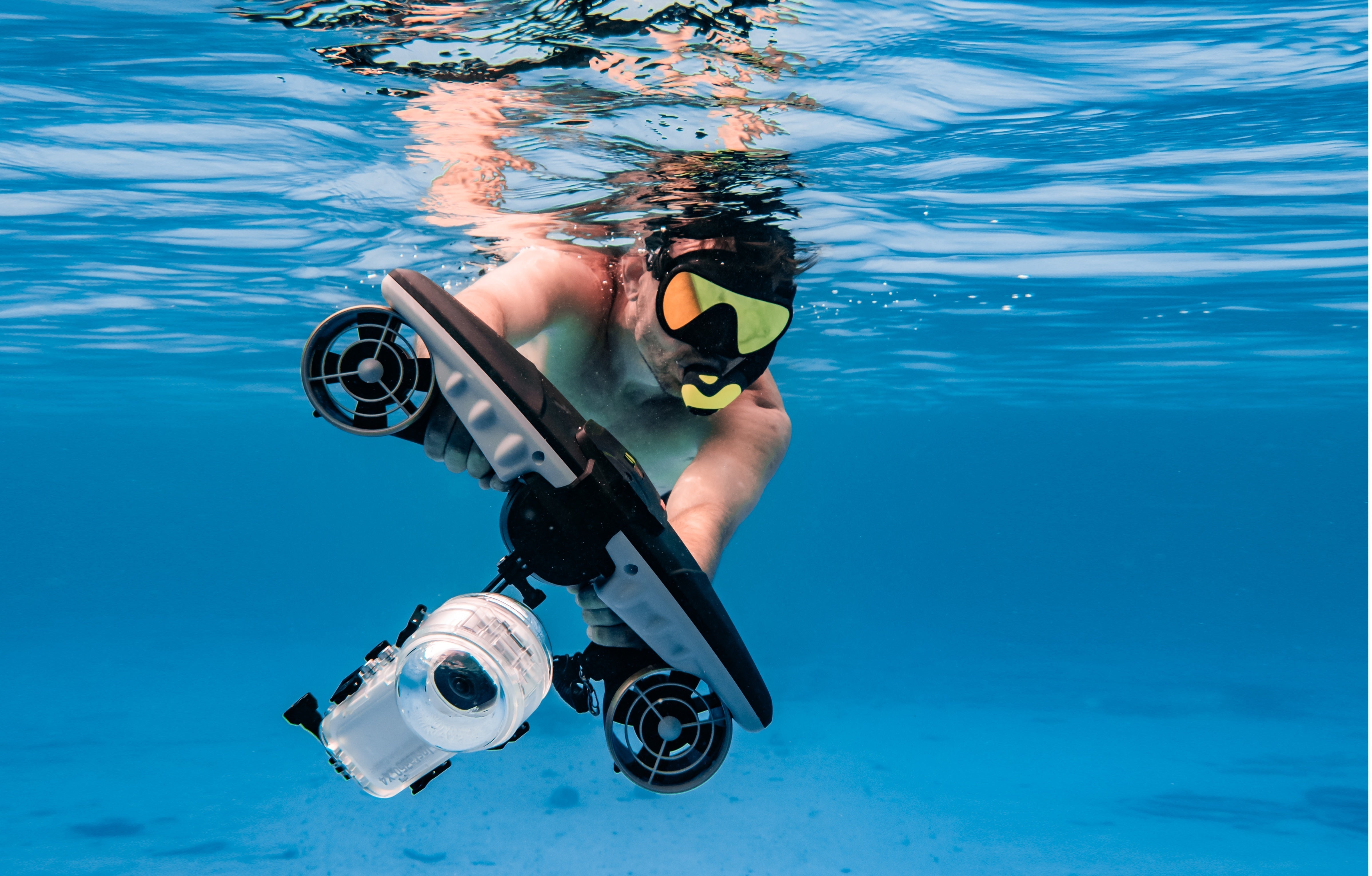






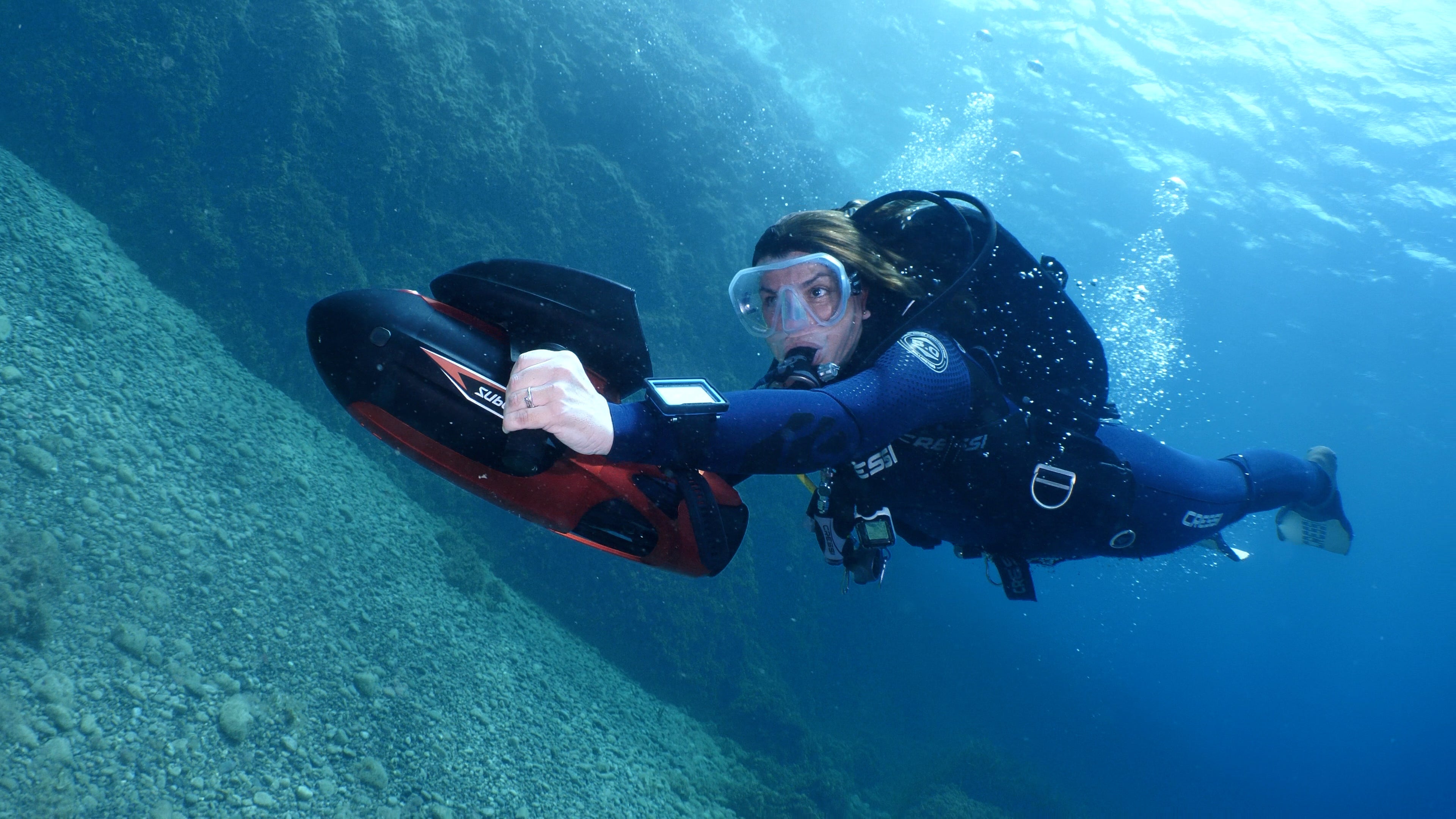
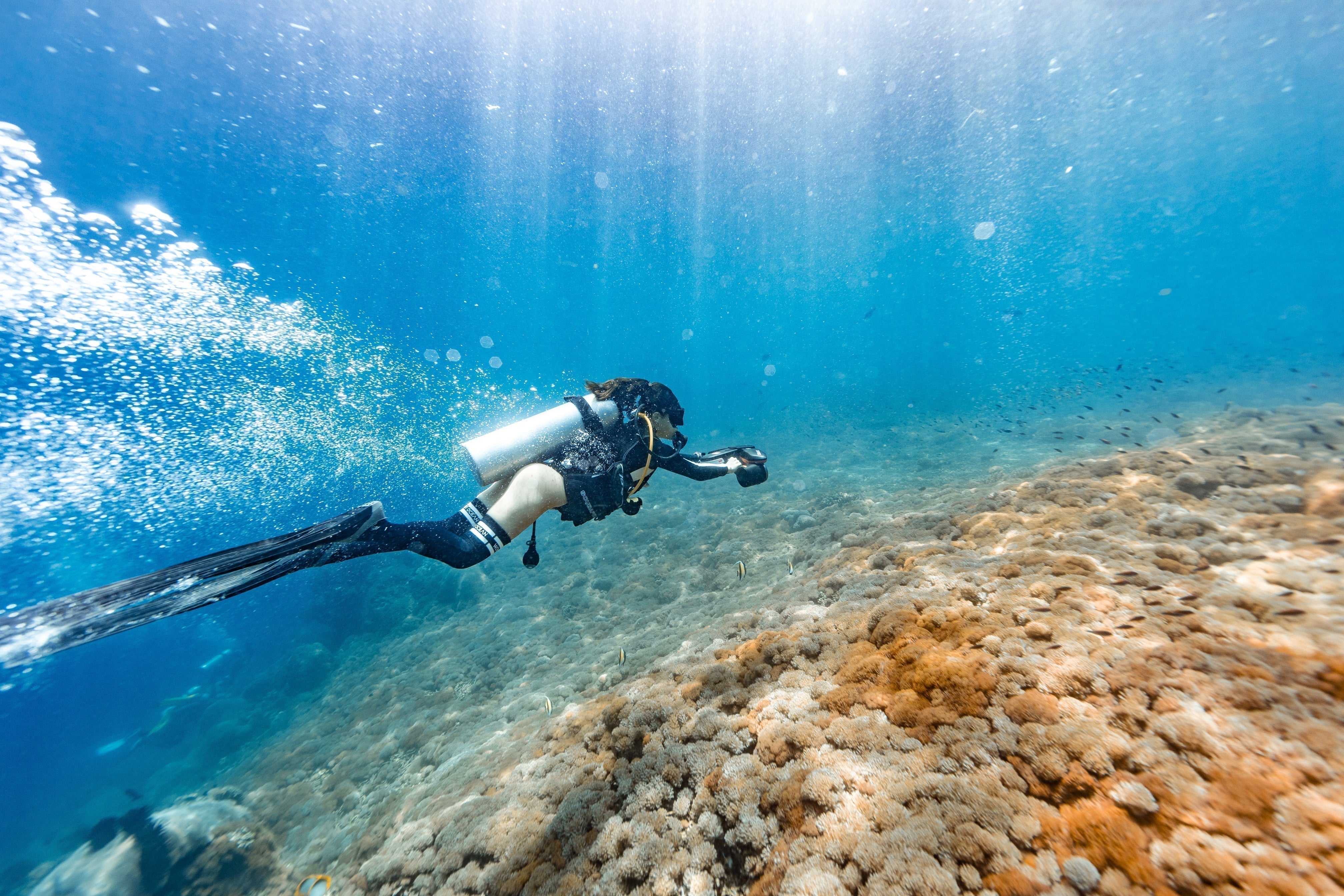
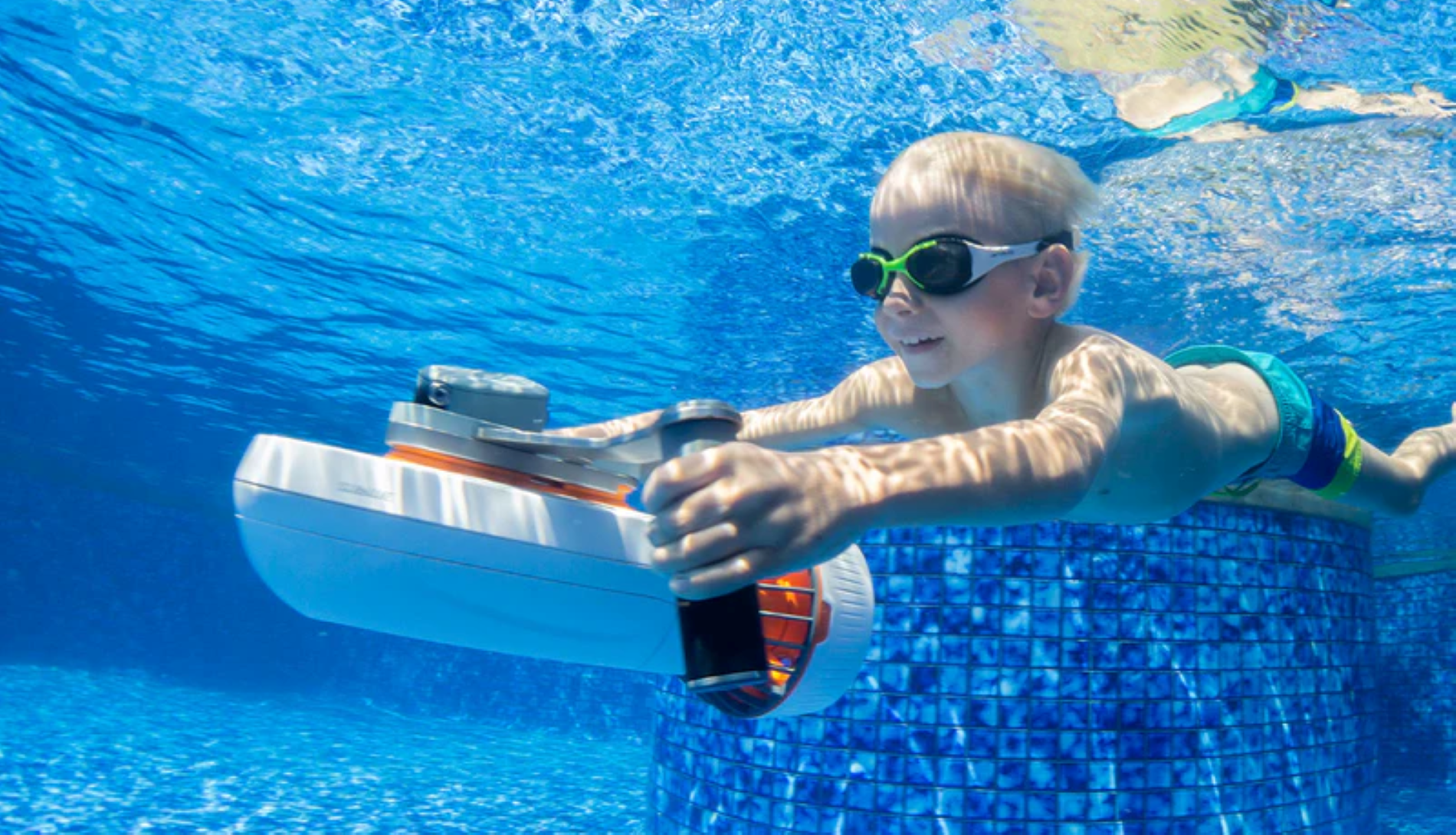
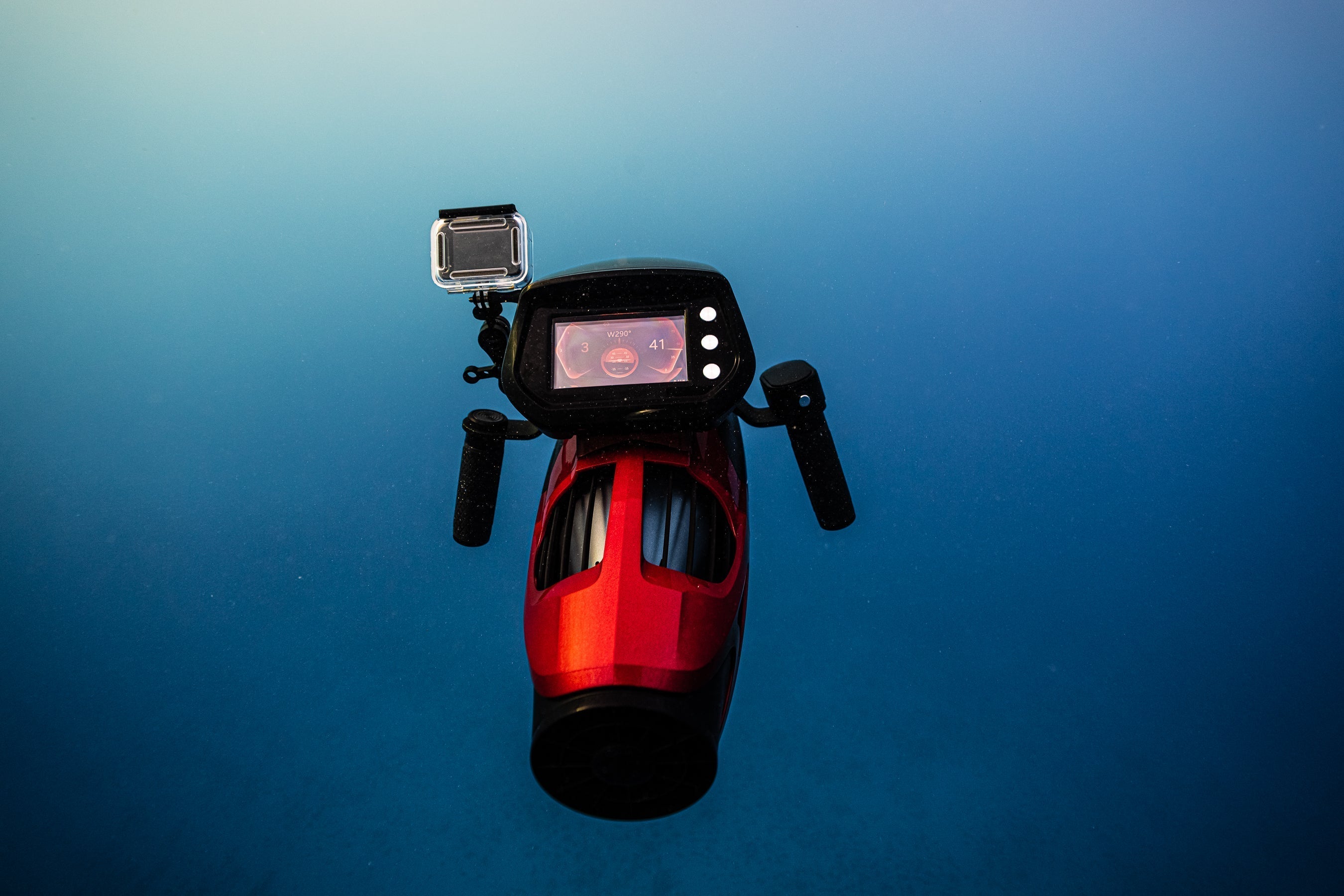
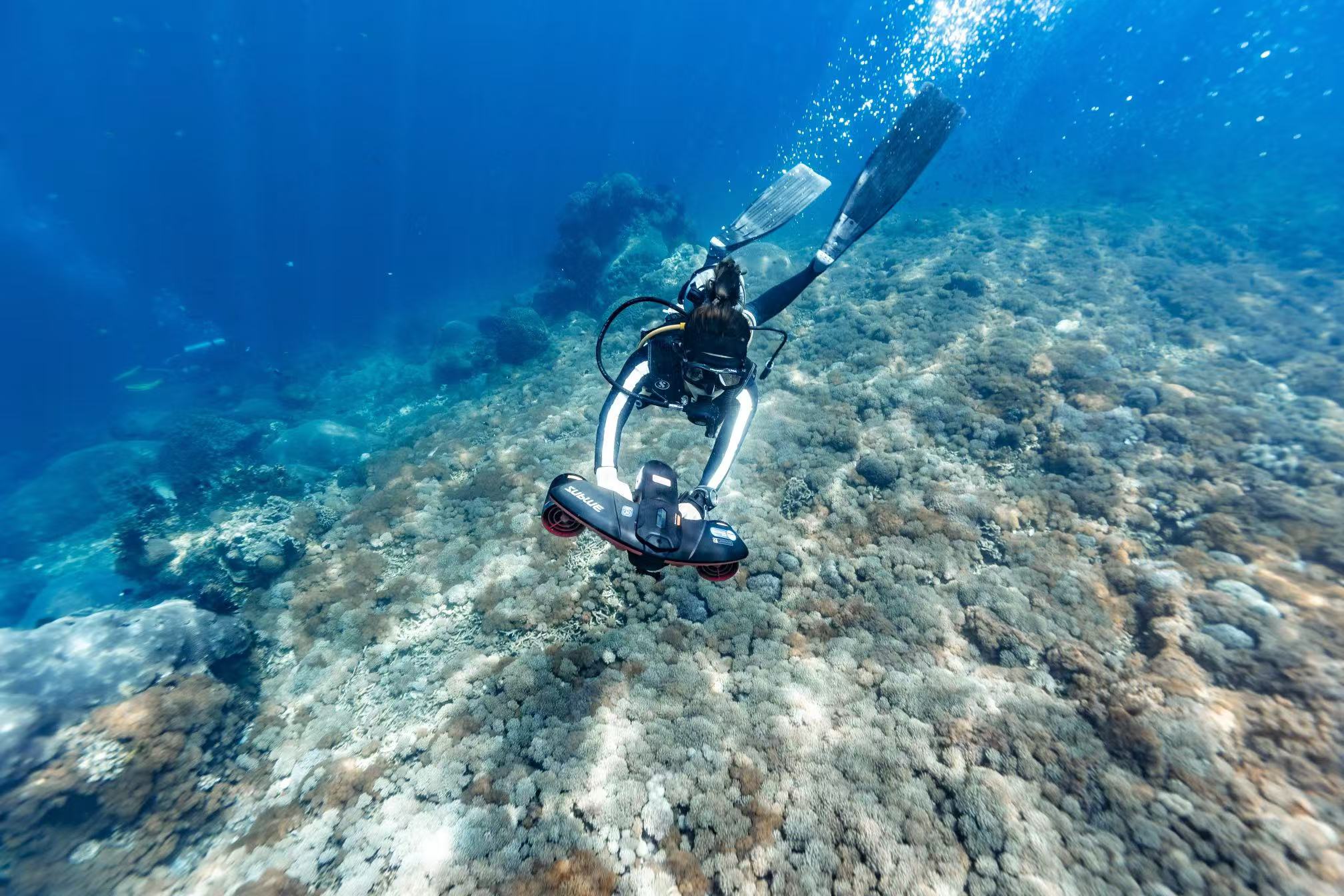
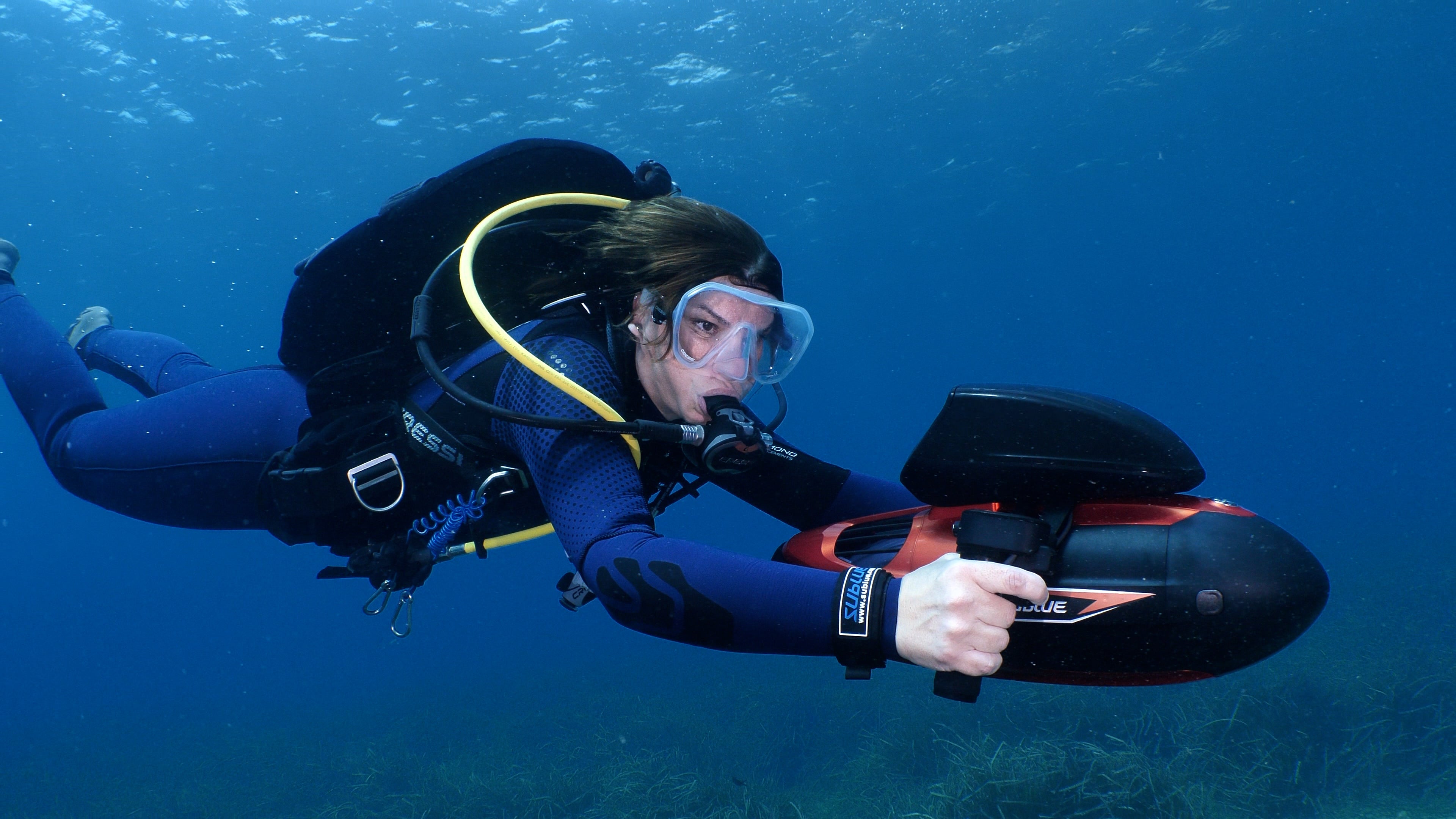
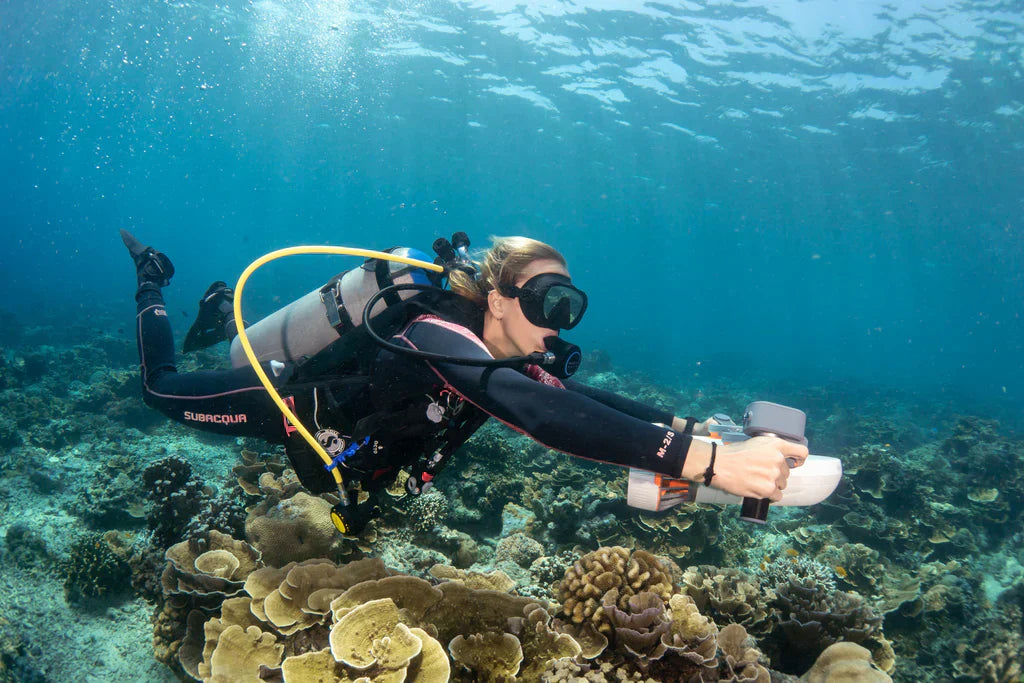
Partager:
Le guide professionnel du plongeur pour les scooters sous-marins : performances, techniques et équipement
Le guide ultime pour équiper votre yacht avec les derniers jouets nautiques indispensables